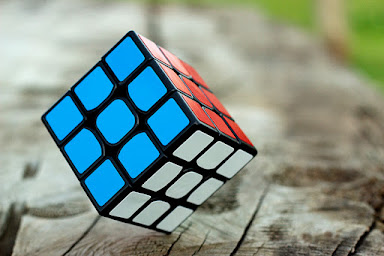Unraveling the Mystery: A Beginner's Guide to Solving the Rubik's Cube
"Challenging," "rewarding," "Familarize," "Understand," "Learn," "Solve" - the Rubik's Cube, a timeless puzzle that has captured the hearts of people from all walks of life, presents a unique journey to its solvers. With over 40 years of existence, its popularity remains unchallenged. A beginner's guide to the Rubik's Cube follows:
Familiarize yourself with the cube: Before starting your quest to solve the cube, take a moment to understand its components. The Rubik's Cube is composed of 6 distinct sides, each with a different color, and comprises 9 smaller cubelets. Through rotating around a central axis, the cubelets can be rearranged and mixed.
Understanding basic movements: To solve the cube, you must comprehend a few fundamental movements. "Turns" - the most crucial of these, involve rotating one of the 6 sides 90 degrees, either clockwise or counterclockwise. "Twists" are also important and involve rotating a single cubelet by 90 degrees.
Notation system: A notation system has been developed to communicate the moves you make on the Rubik's Cube. Letters are used to represent the sides of the cube, with "U" for the top, "D" for the bottom, "L" for the left, "R" for the right, "F" for the front, and "B" for the back. Lowercase letters represent counterclockwise turns, while uppercase letters indicate clockwise turns.
Solve the white cross: The initial step in solving the Rubik's Cube is to solve the white cross. To achieve this, you must arrange the white cubelets so that they form a cross on the white side of the cube. There are various algorithms you can utilize to reach this goal, but the most common is to search for a white cubelet on the bottom layer and use twists and turns to place it in its proper position.
Solve the white corners: After solving the white cross, the next step is to solve the white corners. To do this, place the white cubelets in the correct position on each of the 4 corners of the white side of the cube. Many algorithms can be employed to reach this objective, but the most common method is to search for a white cubelet in the top layer and then use twists and turns to place it in its proper position.
Solve the middle layer: Solving the middle layer is the next step. To achieve this, arrange the middle layer cubelets so that they match the color of the center cubelets on each of the 6 sides of the cube. Numerous algorithms can be employed to reach this goal, but the most typical is to search for a middle layer cubelet that needs to be moved and then use twists and turns to place it in its proper position.
Solve the yellow cross: The next step is to solve the yellow cross. To achieve this, arrange the yellow cubelets so that they form a cross on the yellow side of the cube. There are various algorithms that you can utilize to reach this goal, but the most common is to search for a yellow cubelet on the top layer and then use twists and turns to place it in its proper position.
Solve the yellow corners: After solving the yellow cross, the next step is to solve the yellow corners. To do this, place the yellow cubelets in the correct position on each of the 4 corners of the yellow side of the cube. There are many algorithms that can be employed to reach this objective, but the most common is to look for a yellow cubelet in the top layer and then use twists and turns to place it in its correct position.




Comments
Post a Comment